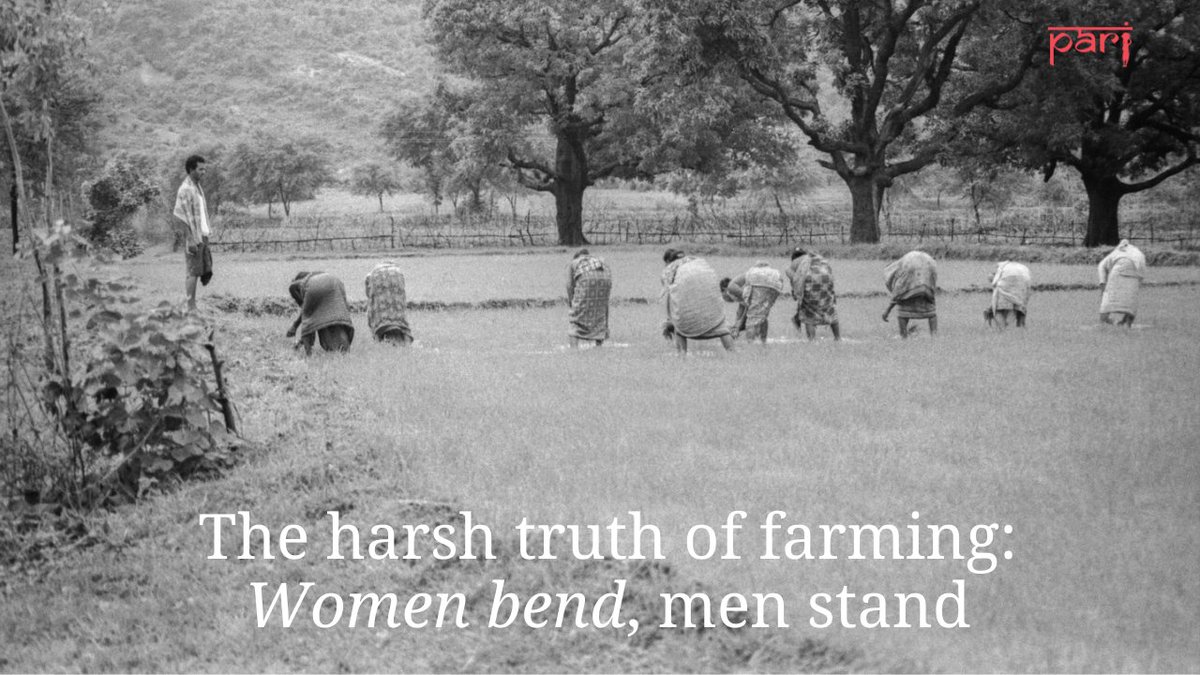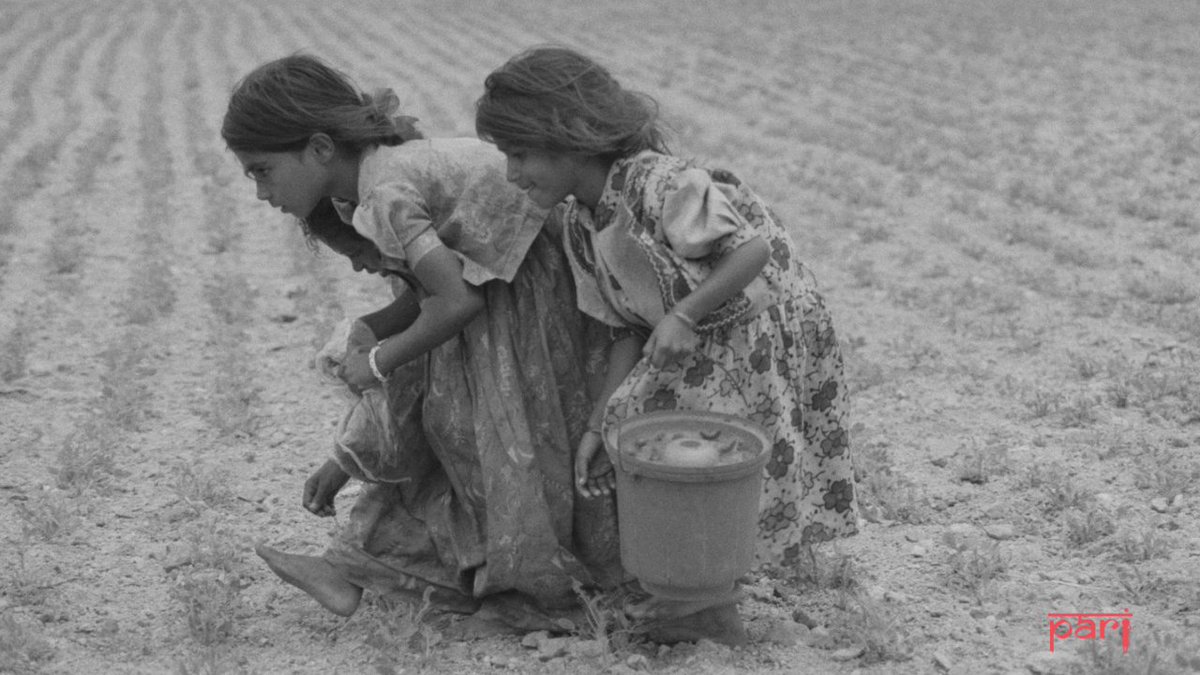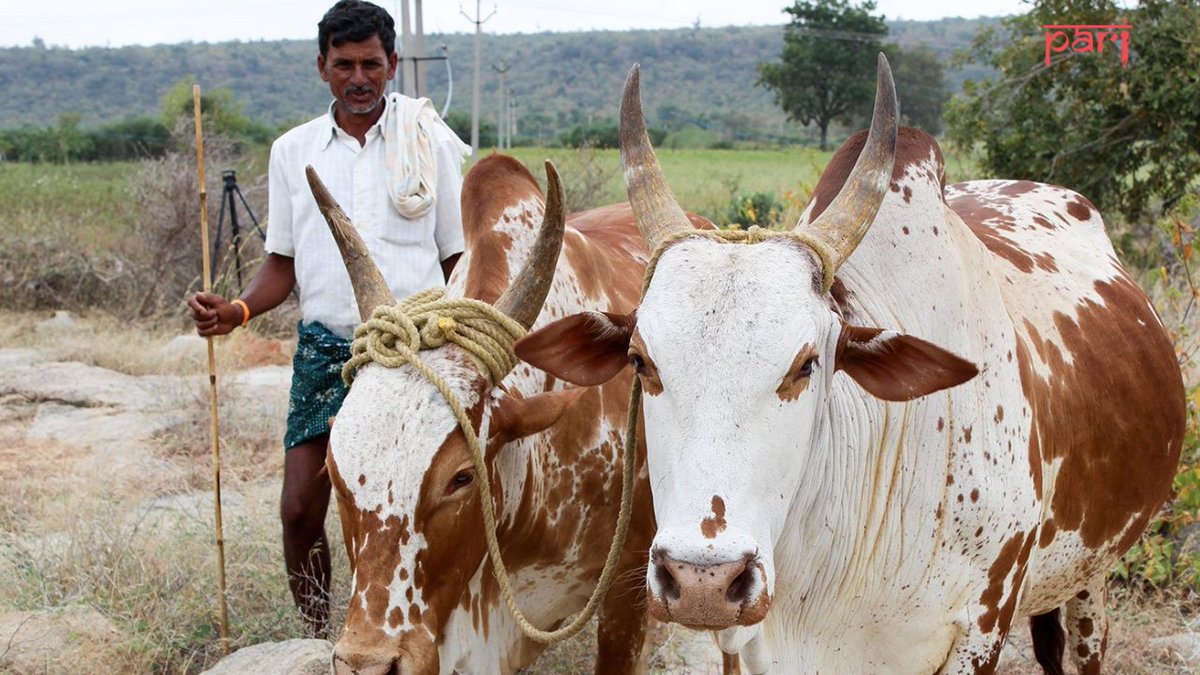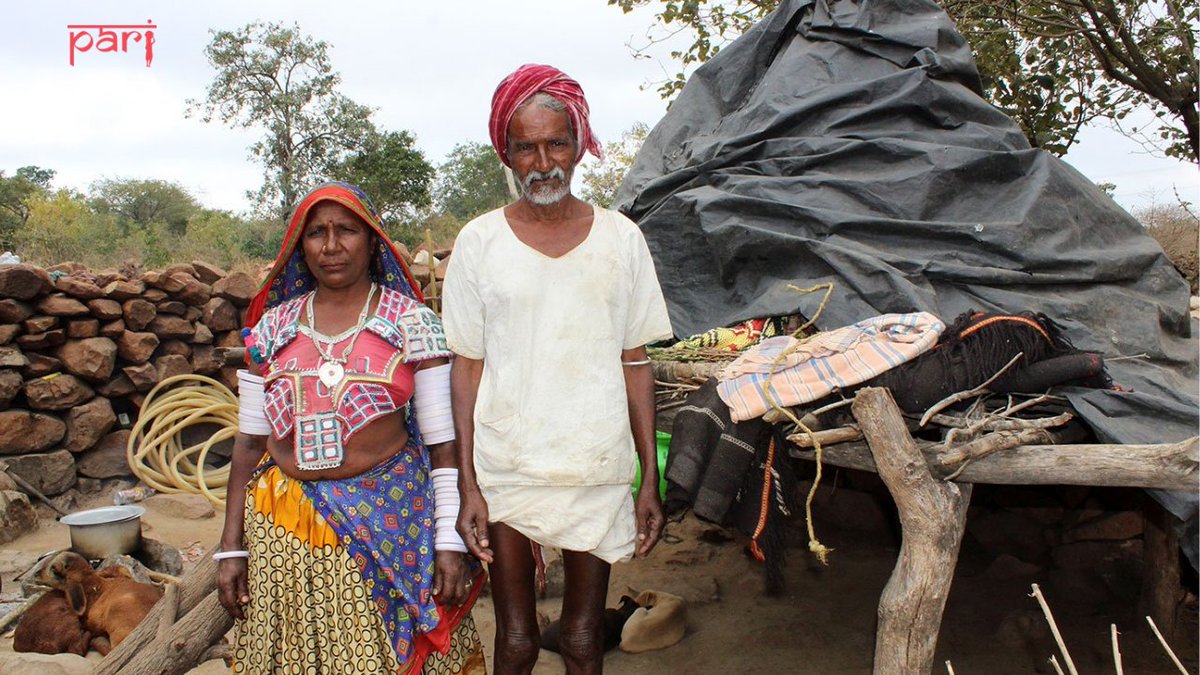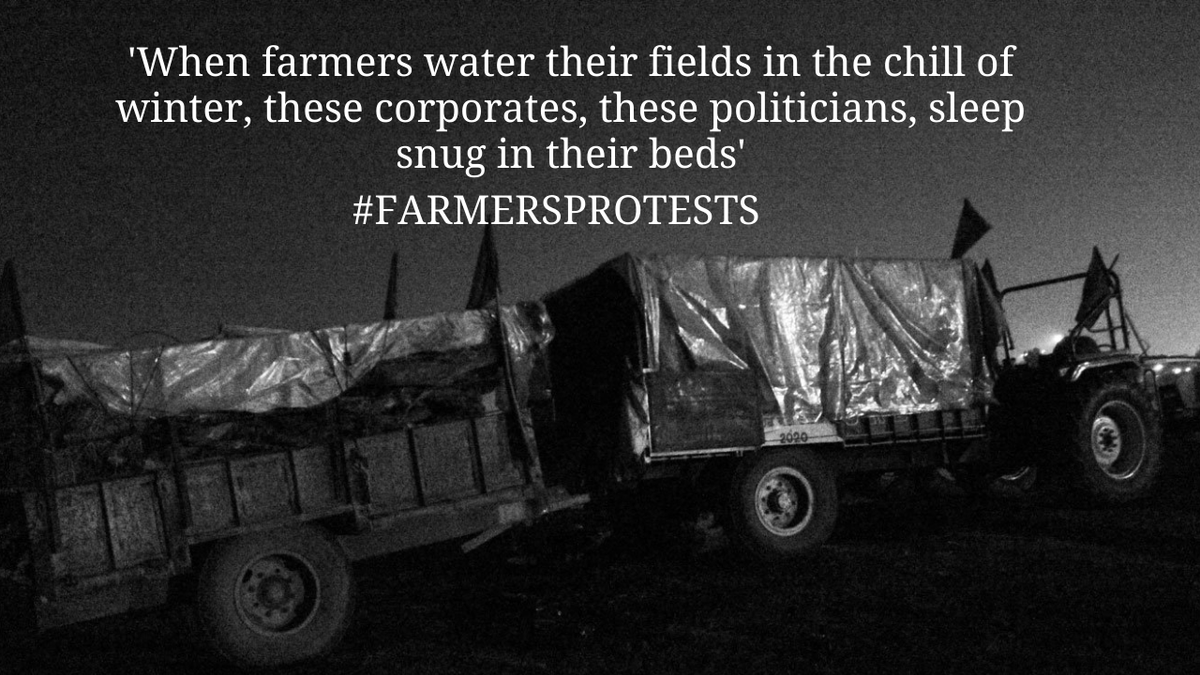
She paused, exasperated by the mid-day sun in Vizianagaram. But remained bent over. She knew she would resume work in moments – in that very posture.
Working in the same cashew fields were 2 other groups of women from her village. All were bent over. 5/n
Working in the same cashew fields were 2 other groups of women from her village. All were bent over. 5/n
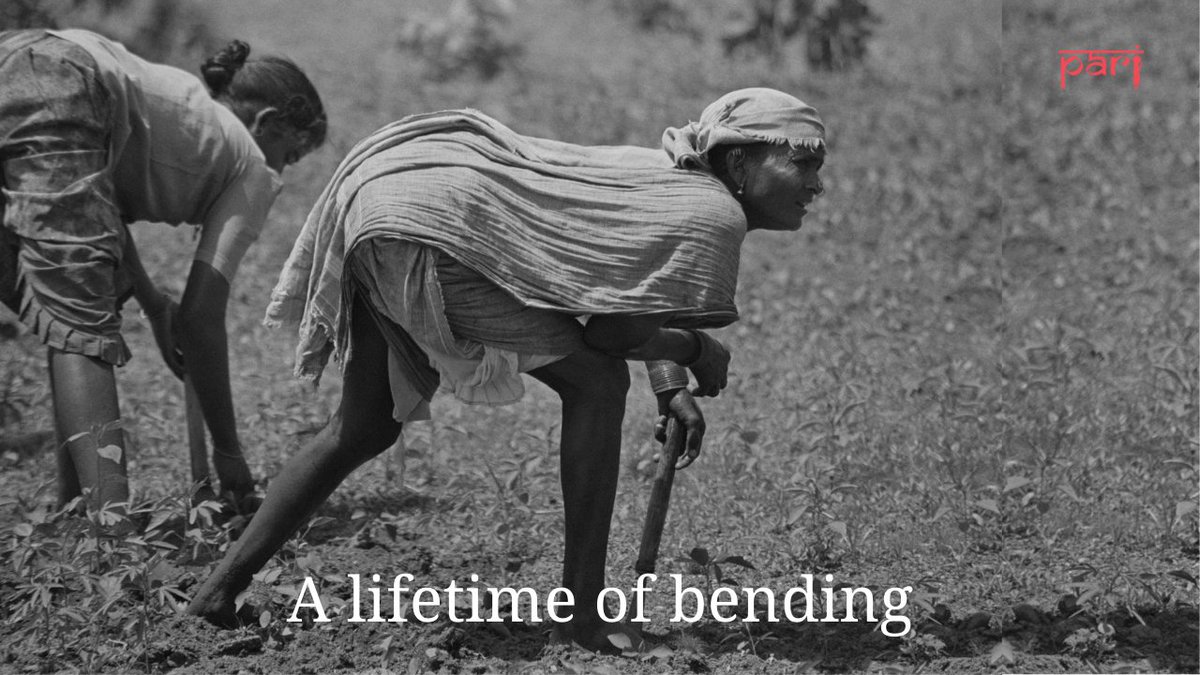
‘Manual’ planting, sowing and weeding involve a great deal of time spent in painful postures. Agricultural tasks show a strong gender divide. Women are barred from ploughing. But they almost exclusively do the transplanting, weeding, harvesting, threshing and post-harvest work. 

Most of these activities mean a lot of bending and squatting. In Nuapada in Odisha, the rain did not stop this woman from weeding. Besides, many of the tools and implements used were not designed for the comfort of women. 7/n 

There’s also injuries from implements made for men and never refashioned for women. Cuts and gashes from sickles and machetes are common. Decent medical care is rare, while tetanus is a constant threat. 8/n 

Such hard work leads to high infant mortality. Prolonged squatting sparks off strains and stresses that often lead to premature births. Also, women workers don’t get to eat enough. Their general poverty ensures this. Serving the family first and eating last worsens it. 9/n 

Since women are barred from tilling the land, maybe the old slogan “Land to the tiller” needs reworking. Instead, try “Land to those who work on it.” #WomenFarmersDay [fin] 

PS. These rates are circa 1999-2000, they have risen marginally. The women still toil the same way.
• • •
Missing some Tweet in this thread? You can try to
force a refresh




